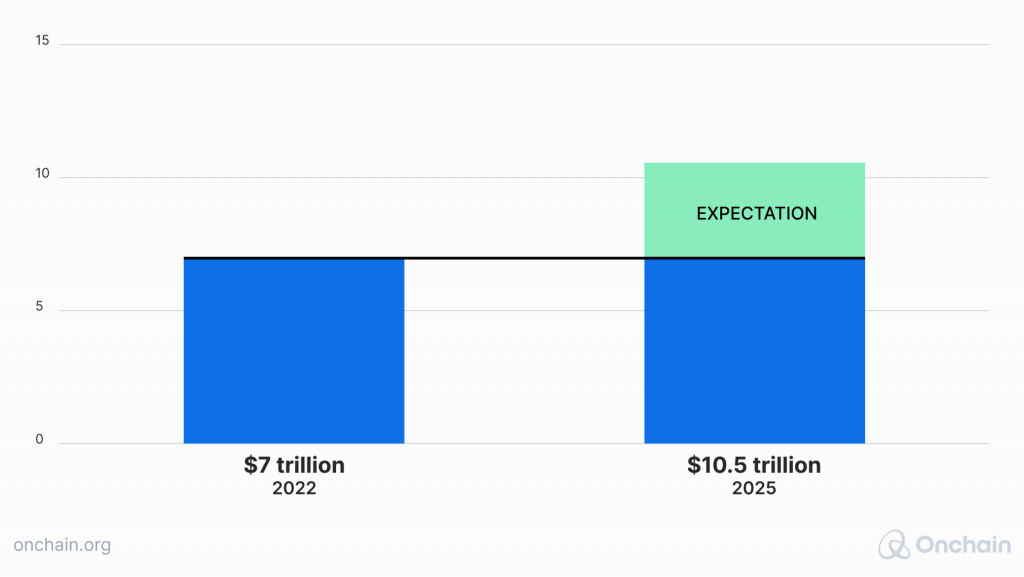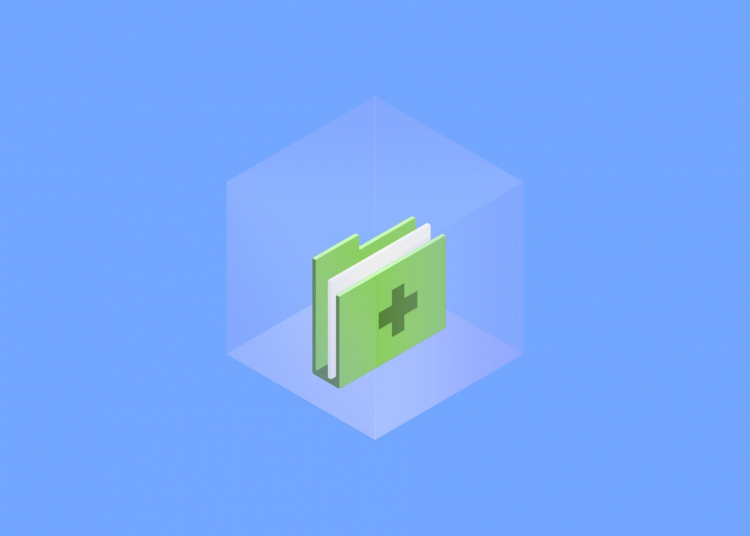AI is pushing innovation in healthcare forward. It’s mind boggling to many patients and professionals alike, who barely got used to conventional Electronic Health Records (EHR). The question is, do these technologies address the true challenges that can and will turn into critical issues in the future? Have forward-thinking institutions considered all their options including blockchain healthcare applications?
Research has already revealed that blockchain applications in healthcare have the potential to crack some of the toughest nuts when it comes to securing, sharing, and governing health data. We are now seeing more and more start-ups picking up the glove to finally provide blockchain applications for healthcare data management.
What is an EHR?
EHR definition: An Electronic Health Record (EHR), also called EMR (Electronic Medical Record) is a digital version of a patient’s medical paper-chart and history.
Its purpose is to provide a centralized and easily accessible source of information for both healthcare providers and patients. The idea is to enable better coordination and allow for more efficient overall patient care.

An EHR typically includes the following data:
- Demographics
- Treatment progress notes
- Medical history
- Medication history
- Allergy data
- Core vital signs
- Health issues
- Immunization records
- Laboratory test results
- Radiology reports
The adoption of Electronic Health Records marks a significant advancement for the industry. Unfortunately there are still open issues for which current technologies provide only insufficient solutions.
To make it worse, some challenges are expected to grow in the future. We are talking about ensuring data security and privacy, facilitating interoperability, and the need for changes in data governance.
For a wider understanding of the benefits and challenges of EHRs, read our article on EHR adoption pains here.
In this article we’ll focus on existing blockchain healthcare applications that address three unsolved aspects of EHR implementation.
Are Electronic Health Record systems counteractive?
No one questions the potential benefits of using EHR instead of paper-based records. However, when you research the topic you quickly realize that the promises and challenges are often identical.
Here are three examples:
1. EHR promises enhanced safety and security
One motivation to transition to Electronic Health Record systems is to enhance the security of patient records.
At the same time, cybercrime is continuously on the rise. From the HIPPA journal’s updated statistics in November 2023, we learn that 32% percent of all recorded data breaches between 2015 and 2022 were in the healthcare industry.
Data breaches result in data loss, corruption or misuse. In some cases, sensitive personal information is sold to third parties.
Even if none of this occurs, incidents result in down time, meaning the EHR is unavailable till the breach is fixed. A delay in treatment can pose a risk to a patient’s health or life.
For health institutions, downtime affects the cost of running EHR software. According to research carried out by Comparitech The cost of downtime to medical organizations due to attacks is estimated at $15.5 million in 2023. The 2023 cyber crime report by AAG-IT concludes “It’s predicted that cyber crimes cost the global economy around $7 trillion in 2022, and this number is expected to rise to $10.5 trillion by 2025.”

2. EHR enables easy medical data sharing
It’s the sweet dream of healthcare consumers and providers alike to access and share medical records without having to sift through dusty medical archives in some basement. Digital data storage would enable this.
However, during the 2020 pandemic, the limitations of current EHR interoperability became painfully obvious. Doctors needed to manually transfer data between different systems because each institution uses their own data and file formats. Manual data transfer contributes to mistakes and duplicates, leaves clinicians frustrated, and causes patients’ mistrust.
Automatic data transfer is often impossible, or incomplete, leading to improper clinical decisions for patients moving between facilities. Ultimately, this opens the door to incorrect diagnosis and eventually mistreatment, putting patents at risk.
In the expanding healthcare sector we will see an even greater variety of data formats in the future. Additionally, more and more healthcare related organizations, such as insurances, pharmaceutical services and research institutes, request access to EHR systems. The need for safer, more reliable medical data sharing methodologies will keep growing.
3. EHR provides patients with more control
A proclaimed key benefit of EHR systems for patients is the ability to access their health records whenever necessary. Individual care receivers no longer rely on a particular provider to provide them with their latest lab test results or respond to inquiries from insurance providers or pharmacists.
With the conventional data storing and transaction technologies, patients can view their records. However, they still have no control over how data is stored, and secured, and who has permission to view or add data.
This leads to the following concerns:
- Medical documents and data are intended for medical professionals. A CT-scan or R-Ray, for example, is incomprehensible without the trained eye of a physician. So, what use is viewing a medical record to the patient? To obtain a second opinion, or treatment in a different location, the patient needs to make the record available to another facility or care giver, who would need to view and update the record. And that is still impossible.
- In addition, the patient’s data is subject to the security posture of the server it’s stored on and the data governance policies of the organizations. In other words, the patient has no way of protecting or ensuring the protection of their data or data privacy. The trust-level of patients and care receivers is low -, and we’ve seen there’s sufficient reason for it.
- The complexity and risk factors leave consumers wary. According to PPD, the biggest challenge in running clinical trials is that patients are reluctant to share their data. Despite the improved technical availability of public health data, researchers can’t access it.
Electronic Health Record systems in blockchain
All these issues can be solved with an EHR system that puts the ownership in the hands of the care receiver instead of the care provider while maintaining data integrity and security.
The only currently known technology that achieves this is blockchain in healthcare applications.
The benefits and challenges of blockchain in healthcare have been researched and explored. However, moving to a decentralized data storage and management system requires a new network infrastructure and that is only gradually being established.
Some blockchain health applications are already gaining ground, others are appearing on the global healthcare stage.
4 Blockchain healthcare application examples
1. Guardtime
Guardtime is a platform based on the Alphabill Public Chain, enabling enterprise app building in a variety of business verticals, such as defense, logistics, energy and healthcare.
Some examples for the blockchain in healthcare are: A ‘data engine’ for use of pharmaceuticals and impact on health data, developed together with Roche and Astra Zeneca. Guardtime’s first use case, however, was the establishment of Estonia’s blockchain-based, nationwide e-health record system.

“Our very first use case was for the Estonian eHealth Foundation providing mathematical guarantees for auditing the use of health-care data. Since then, we have extended the functionality to support consent and regulatory reporting. Consent can be tokenized i.e., access to data can be given in the form of a token which sets limits to who and how data sets can be access, providing immutable proof of what happened when to regulators” (from the Guardtime website).
Each Estonian citizen has an Electronic Health Record, identified by their electronic-ID. Estonians use the e-patient portal and can manage permissions and consent and access and share data through the network.
2. Avaneer
Avaneer is a decentralized peer-to-peer network and was launched in March 2023. The platform’s goal is to bridge the gaps in interoperability through a combination of advanced technologies, including AI and blockchain for data transaction and sharing.
The solution ensures secure, authorized, transparent, and audible data. The user controls where the data goes and how it’s used.

The platform also includes the Avaneer solutions exchange, a digital marketplace, where innovators can offer apps created to automate collaboration processes and enable participants to work together. The main idea is to unlock data for efficient use without centralizing it or compromising its security.
Avaneer’s goal is to break down the current data silos and achieve health data fluidity and accessibility. The digital health network helps streamline EHR and costs, simplify billing and improve care giver’s efficiency. For example, eligibility verification, or getting your hands on a lab report so you can go for a second opinion can happen in real time on the Avaneer network. At the same time, the data remains secure and private.
Avaneer lays the foundation on which developers, entrepreneurs and innovators can build and offer their solutions and seamlessly connect with others in the entire healthcare sector. The motivation is to provide patients with better, faster care and service.

3. LifeGraph® by BurstIQ
BurstIQ developed LifeGraph®, a blockchain-enabled platform that connects global health data sources, helping to personalize healthcare and make it accessible for individuals worldwide.
The solution establishes an individual’s unique comprehensive and personalized health profile based on their EHR and other data. The decentralized structure ensures the individual’s control over the data and eliminates privacy concerns on the patient’s side as well as the regulatory level.
Blockchain technology ensures the accuracy of data which becomes immutable on the blockchain. The EHR data is used in clinical knowledge bases. A case study by BurstIQ shows that their platform optimizes the use of EHR data, leading to more accurate, safer and more cost effective healthcare solutions and management.

According to the BurstIQ website “LifeGraph revolutionizes how sensitive data is collected, managed, and controlled.”
The Solution
- enables the creation of personal health records, digital health apps, patient portals, and facilitates access and consent services for health information exchanges and collaborative research networks.
- utilizes smart contracts for users to define, share, and control access to their data within Web3 applications.
Users can
- handle personal and professional data, laying the groundwork for identity wallets, directories, consent management, ERP services, credentialing, and user account management.
- collect, manage, and consent to their health data via a customizable dashboard.
- modify or revoke access to their data at any time, emphasizing control and privacy.
4. Patientory
Patientory is a health data management app for individuals, defined as a global health data wallet. The platform leverages blockchain architecture to decentralize health data, enhancing security and reducing vulnerability to breaches.
Patientory combines clinical and everyday data for a comprehensive health view. It gives individuals control over their healthcare information and offers personalized care plans with rewards like NFTs for healthy actions.

In addition to its consumer solutions, Patientory also offers enterprise solutions. Their enterprise platform, Neith, allows stakeholders to create reports and predictive analytics for population health
As part of the CommonWell Health Alliance, Patientory actively contributes to policy discussions, participating in roundtables to shape patient-centric, secure, and decentralized networks for research and population health engagement.
As of January 2023, Patientory services 25K+ patients and conducted 1K+ customer validation interviews. It counts 45.000 subscribers, 16 strategic partners and 3 clinical trial partnerships according to the Startup Health innovation ecosystem.
AI, Blockchain, and the future of EHR
The current hype is boosting AI, but healthcare leaders can’t afford short-term thinking. The healthcare industry must act responsibly with human health and human health data. In this regard, data integrity is just as important as human integrity.
Get involved, inform yourself about existing blockchain solutions in the healthcare sector or other industries. Keep an eye on blockchain applications in healthcare, and how blockchain alone or in combination with AI can help overcome the most critical challenges for EHR advancement.




